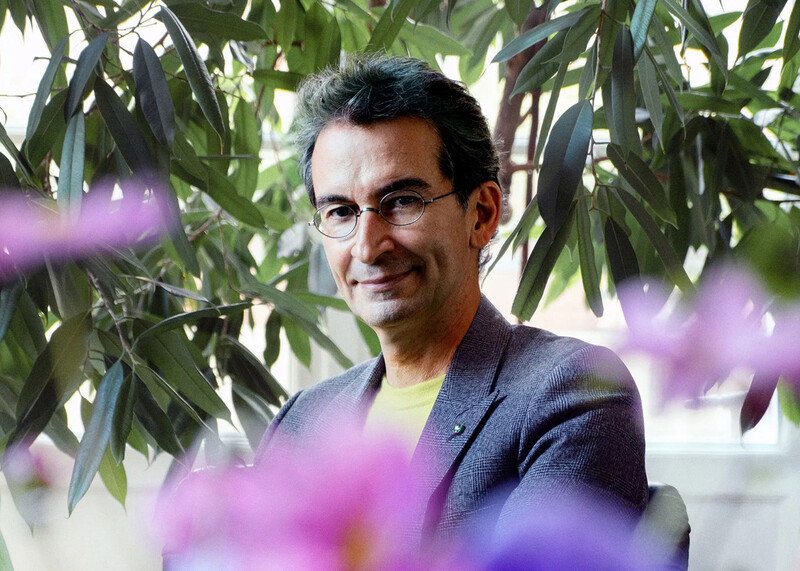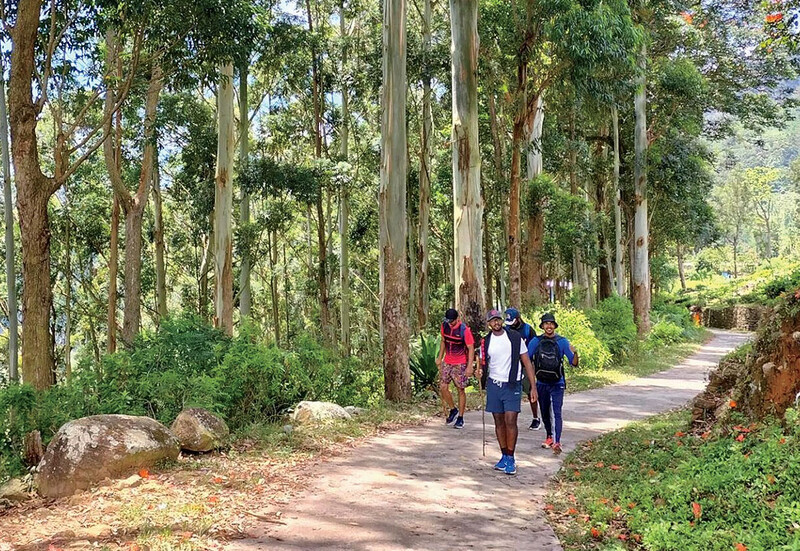As a child, whenever Seth Kamil ’93GSAS would visit New York, he’d go on long walks with his grandfather, who had a starry-eyed love for the city. “He took me everywhere, even the roughest parts,” says Kamil. “I think he was at his happiest when he was showing me the city.” Kamil inherited that passion and built it into a thriving company: today, as the cofounder and president of Big Onion Walking Tours, he oversees 1,800 neighborhood tours — serving thirty thousand customers — every year.
Kamil started giving tours in 1991, when he was a twenty-four-year-old Columbia graduate student looking to earn a little extra cash. His adviser, historian James Shenton ’49CC, ’54GSAS, suggested that Kamil — who was studying American ethnic and urban history — become a guide at the Lower East Side’s Tenement Museum. He did, and after working there for a year, he and fellow guide and grad student Edward O’Donnell ’95GSAS decided to start their own company.
Outdoor walking tours were uncommon at that time, but Kamil and O’Donnell were inspired by another Columbia professor, the New York City historian Kenneth T. Jackson, who encourages his students to explore the city by foot. They began guiding people around the Lower East Side, Harlem, and Ellis Island seven days a week, writing their dissertations at night.
“I’m Jewish and he’s Irish Catholic, so we could work every day but Thanksgiving,” Kamil says.
Business was initially slow, but the company caught a break in 1994 when a writer for the Washington Post travel section was the only person to book a tour on a snowy day. Kamil — who didn’t know his customer was a reporter — went ahead with his two-hour introduction to the Lower East Side and earned the company a glowing write-up.
O’Donnell left the business in 1996 for academia, while Kamil expanded the company. He never finished his dissertation, on the history of homelessness in New York, though his research did inform one important business decision: the choice of the company’s name. In the late nineteenth century, Kamil learned, police on the Bowery used to call the homeless “onions,” because they were dirty on the outside, with layers of stories underneath. For Kamil, that felt like an apt metaphor for the city. “You have to brush off the dirt to find what’s hidden,” he says.
Big Onion hires only graduate students or recent PhDs as tour guides and pays them a starting salary of fifty dollars an hour. Guides customize each tour, integrating the company’s research with their own academic knowledge. Explaining history to tourists from Bulgaria or a group of second-graders turns out to be excellent preparation for teaching, says Sonja Drimmer ’11GSAS, a former guide, who is now an assistant professor at the University of Massachusetts, Amherst. “Being a guide was essential to learning how to think on my feet,” she says.
One of the most popular tours, the Original Multi-Ethnic Eating Tour, winds through the Dominican, Jewish, Italian, and Chinese communities of the Lower East Side. The newest, Art, Sex, and Rock & Roll, takes visitors from artist Andy Warhol’s studio to the site of CBGB, the club where punk rock was born.
For Kamil, the rewards of his work are personal as well as professional. He met his wife while leading a tour through the landmarked Eldridge Street Synagogue — she was cleaning stained-glass windows as a volunteer — and wooed her with sour pickles from Guss’s on the Lower East Side and obscure facts about nineteenth-century Yiddish-speaking gangsters. Today, they live in Brooklyn, but Kamil still crosses the river most days to lead his original Lower East Side tour. “I feel lucky to spend my days doing my favorite thing,” he says. “Walking around New York never gets old.”



